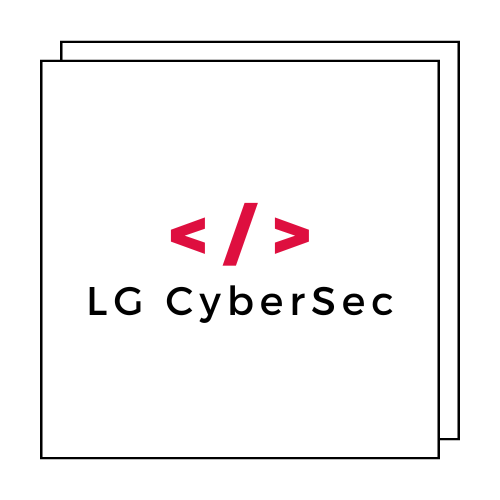The cybersecurity landscape continues to evolve as threat actors develop increasingly sophisticated attack methods. Recent reports reveal that the notorious Confucius hackers have launched a new campaign against Pakistan using advanced malware variants called WooperStealer and Anondoor. This development highlights the growing sophistication of Advanced Persistent Threat (APT) groups and their ability to adapt their tactics to target specific regions and organizations.
For small and medium-sized businesses (SMBs) and general consumers, understanding these emerging threats is crucial for maintaining robust cybersecurity defenses. The techniques employed by these hackers—including phishing campaigns and DLL side-loading—represent attack vectors that can impact organizations of all sizes, making awareness and preparation essential.
Understanding the Confucius APT Group
The Confucius APT group, also known by various aliases in the cybersecurity community, has been active for several years, primarily targeting South Asian countries including Pakistan, India, and Bangladesh. This group is characterized by its persistent nature and sophisticated attack methodologies, making it a significant concern for organizations in the region.
Key characteristics of the Confucius group include:
- Long-term espionage campaigns targeting government and military organizations
- Use of custom malware tools tailored for specific targets
- Employment of social engineering tactics to gain initial access
- Continuous evolution of attack techniques to evade detection
The group’s latest campaign demonstrates their ability to develop new malware variants and adapt their tactics to current cybersecurity defenses. According to cybersecurity research, APT groups like Confucius often spend months or even years planning and executing their attacks, making them particularly dangerous to unprepared organizations.
WooperStealer Malware: A New Information Stealer
WooperStealer represents the latest addition to the Confucius group’s malware arsenal. This information-stealing malware is designed to infiltrate target systems and exfiltrate sensitive data, posing significant risks to both individual users and organizations.
Primary capabilities of WooperStealer include:
- Credential harvesting from web browsers and applications
- Collection of system information and network configurations
- File system reconnaissance and data exfiltration
- Persistence mechanisms to maintain long-term access
The malware employs sophisticated evasion techniques to avoid detection by traditional antivirus solutions. For SMBs, this presents a particular challenge as many smaller organizations rely primarily on basic endpoint protection without advanced threat detection capabilities.
Information stealers like WooperStealer can have devastating consequences for businesses. Industry statistics show that data breaches cost SMBs an average of $4.88 million per incident, with many smaller businesses unable to recover from such losses.
Anondoor: The Persistent Backdoor Threat
Alongside WooperStealer, the Confucius group has deployed Anondoor, a backdoor malware designed to provide persistent access to compromised systems. This tool represents a significant escalation in the group’s capabilities and poses long-term risks to affected organizations.
Anondoor’s key features include:
- Remote command execution capabilities
- File upload and download functionality
- System monitoring and surveillance features
- Communication with command and control (C&C) servers
The backdoor’s design allows attackers to maintain access even after initial detection attempts, making complete remediation challenging. This persistence mechanism is particularly concerning for organizations that may not have comprehensive incident response procedures in place.
For businesses of all sizes, backdoor malware represents one of the most serious cybersecurity threats. Once established, these tools can provide attackers with ongoing access to sensitive systems and data, potentially leading to intellectual property theft, financial fraud, or operational disruption.
Attack Vectors: Phishing and DLL Side-Loading
The Confucius group’s latest campaign employs two primary attack vectors that SMBs should be particularly aware of: phishing campaigns and DLL side-loading attacks. Understanding these techniques is crucial for developing effective defense strategies.
Phishing Campaign Tactics
The attackers initiate their campaigns through carefully crafted phishing emails designed to trick recipients into downloading and executing malicious payloads. These emails often impersonate legitimate organizations or government entities, making them particularly effective against unsuspecting users.
Recent data indicates that 64% of businesses reported facing phishing attacks in 2024, with average financial losses of $150,000 per incident. For SMBs with limited cybersecurity budgets, such losses can be catastrophic.
DLL Side-Loading Exploitation
DLL side-loading represents a more technical attack vector where malicious Dynamic Link Library (DLL) files are loaded by legitimate applications. This technique allows attackers to bypass traditional security measures by leveraging trusted software to execute malicious code.
Key concerns with DLL side-loading attacks:
- Difficult to detect using standard antivirus solutions
- Exploits trust relationships in legitimate software
- Can bypass application whitelisting controls
- Provides a stealthy method for malware deployment
Protection Strategies for SMBs and Consumers
While the sophistication of threats like WooperStealer and Anondoor may seem overwhelming, there are practical steps that SMBs and individual users can take to protect themselves against these and similar attacks.
Email Security and Phishing Prevention
Implementing robust email security measures is crucial for preventing initial compromise. Organizations should consider deploying advanced email filtering solutions that can detect and block sophisticated phishing attempts.
Recommended email security practices include:
- Employee training on identifying suspicious emails and attachments
- Implementation of email authentication protocols (SPF, DKIM, DMARC)
- Use of advanced threat protection solutions
- Regular security awareness training and simulated phishing exercises
Endpoint Protection and Monitoring
Traditional antivirus solutions may not be sufficient to detect advanced threats like those employed by the Confucius group. SMBs should consider investing in next-generation endpoint protection solutions that incorporate behavioral analysis and machine learning capabilities.
At LG CyberSec, we understand that SMBs need cost-effective yet comprehensive security solutions. Our cybersecurity experts recommend a layered approach to endpoint protection that includes both prevention and detection capabilities.
Application and System Hardening
To mitigate DLL side-loading attacks, organizations should implement application hardening measures and maintain strict control over software installations and updates.
Essential hardening practices include:
- Regular software updates and patch management
- Implementation of application whitelisting where feasible
- Use of code signing verification for critical applications
- Network segmentation to limit potential attack spread
Incident Response and Recovery Planning
Even with robust preventive measures, the possibility of successful attacks exists. SMBs must develop and maintain incident response plans that can quickly address potential compromises and minimize damage.
Key components of an effective incident response plan:
- Clear roles and responsibilities for incident response team members
- Procedures for isolating infected systems and containing threats
- Communication protocols for internal and external stakeholders
- Recovery procedures for restoring normal operations
Organizations should also maintain regular backups of critical data and systems, ensuring that recovery is possible even in the event of successful ransomware or data destruction attacks. CISA guidelines recommend following the 3-2-1 backup rule: maintaining three copies of important data, storing them on two different types of media, with one copy kept offline.
The threat landscape continues to evolve, with groups like Confucius demonstrating increasing sophistication in their attack methods. For SMBs and consumers, staying informed about emerging threats and implementing appropriate security measures is more critical than ever.
Immediate action items for organizations include:
- Conducting security awareness training focused on current threat vectors
- Reviewing and updating existing cybersecurity policies and procedures
- Implementing multi-factor authentication across all critical systems
- Establishing relationships with cybersecurity professionals for ongoing support
The emergence of WooperStealer and Anondoor malware in attacks against Pakistan serves as a stark reminder that cyber threats are constantly evolving. Organizations that proactively address these challenges through comprehensive security programs, employee training, and expert guidance will be better positioned to defend against current and future threats.
If your organization needs assistance developing or improving its cybersecurity posture, LG CyberSec offers tailored security solutions designed specifically for SMBs. Our team of experts can help you implement effective defenses against advanced threats like those employed by the Confucius group, ensuring your business remains protected in an increasingly dangerous digital landscape.
Don’t wait for a successful attack to take action. Contact our cybersecurity specialists today to assess your current security posture and develop a comprehensive protection strategy that fits your budget and operational requirements. In the fight against sophisticated cyber threats, preparation and expert guidance make all the difference.

